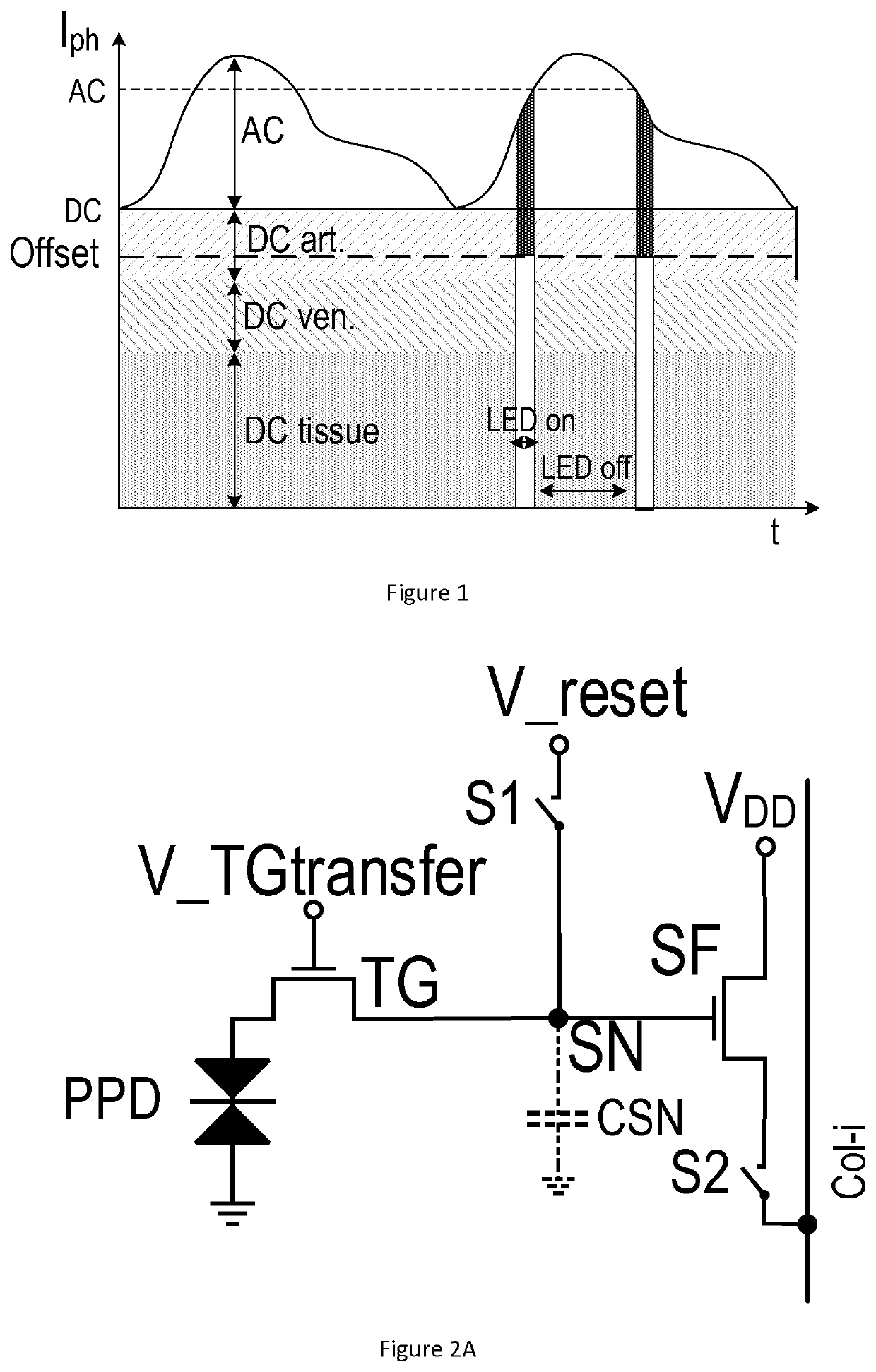Health monitoring device
- Summary
- Abstract
- Description
- Claims
- Application Information
AI Technical Summary
Benefits of technology
Problems solved by technology
Method used
Image
Examples
first embodiment
[0122]A first embodiment relates to a single transfer gate pixel arrangement.
[0123]A PPD comprises a p+-n-p junction (n-p junction buried under a shallow highly doped p+), as shown in FIG. 2B which illustrates a first embodiment of a pixel. The substrate in which the PPD is formed is of p-type doped semiconductor material, and is grounded, leaving the p+ doped zone essentially floating. This forms a charge well in which photogenerated charge accumulates, increasing the voltage at the p+ layer as the charge accumulates. In essence, the p+-n-p doped structure formed in the thickness of the substrate essentially forms two diodes arranged cathode-to-cathode, then layer being shared between both, as illustrated schematically by means of the two nose-to-nose diode symbols on FIG. 2B (note: this symbol is schematic and does not indicate extra components, and merely illustrates the function of the layers and their junctions). This nose-to-nose diode symbol is unconventional, and has been us...
second embodiment
[0159]A second embodiment relates to a dual transfer gates pixel arrangement.
[0160]Further to the first embodiment, it is proposed here a pixel arrangement where, instead of having the PPD electronically connected to the TGtransfer transistor and the ground like in the previous embodiment, at each pixel level, the PPD is electronically connected between the TGtransfer transistor and another transistor, called TGsink transistor, that is to say two transfer gates TGt and TGs corresponding to TGtransfer transistor and TGsink transistor respectively. This is illustrated in FIG. 4A, which differs from FIG. 2A in that the PPD is additionally connected to a drain voltage VDD, which permits emptying the “well” of the PPD independently of the TGtransfer transistor. The exact geometric relationship between TGtransfer and TGsink to the p+ zone of the PPD is unimportant, provided that they can both empty the well of the PPD and do not negatively influence each other. Each transistor being situa...
PUM
 Login to View More
Login to View More Abstract
Description
Claims
Application Information
 Login to View More
Login to View More - R&D
- Intellectual Property
- Life Sciences
- Materials
- Tech Scout
- Unparalleled Data Quality
- Higher Quality Content
- 60% Fewer Hallucinations
Browse by: Latest US Patents, China's latest patents, Technical Efficacy Thesaurus, Application Domain, Technology Topic, Popular Technical Reports.
© 2025 PatSnap. All rights reserved.Legal|Privacy policy|Modern Slavery Act Transparency Statement|Sitemap|About US| Contact US: help@patsnap.com



